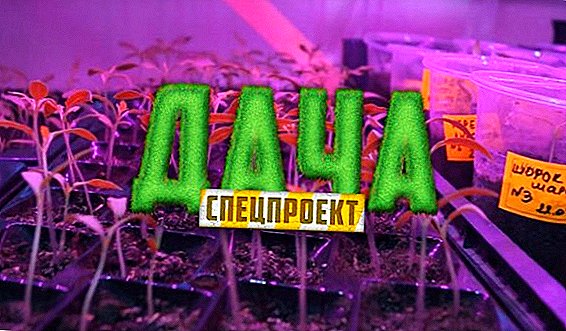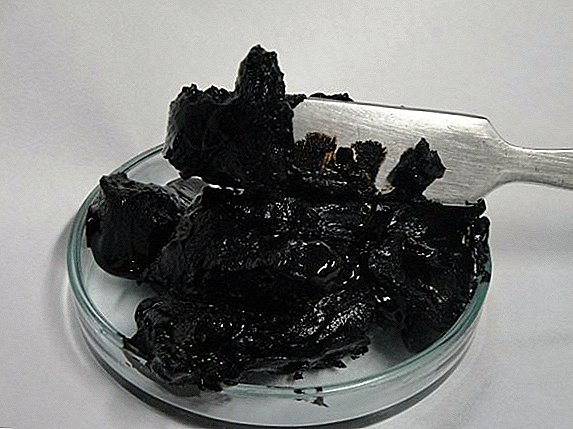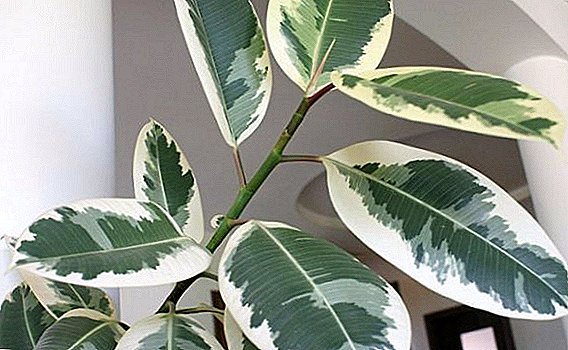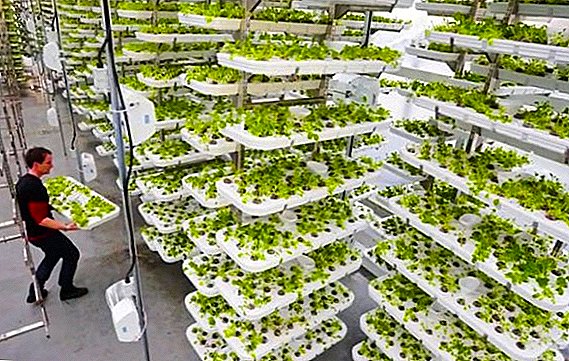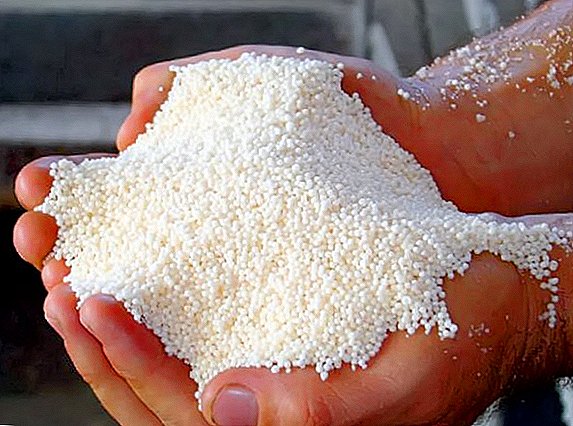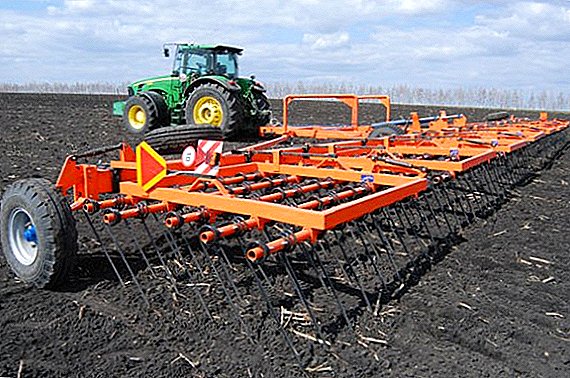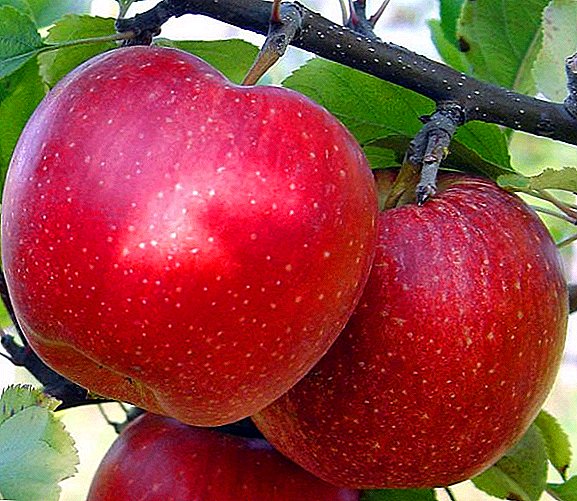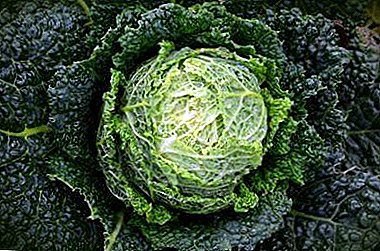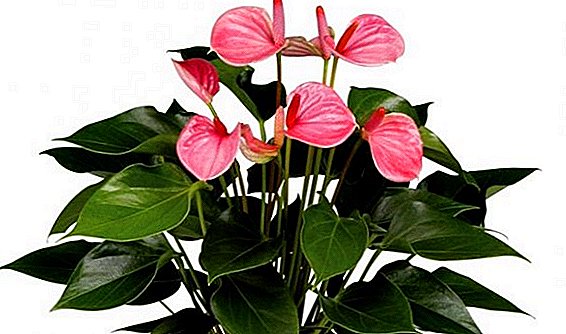
Parsley leaf "Bogatyr" is a highly resistant and productive variety of parsley, used as a dish decoration, food supplement and medicine.
Essential oils in the composition of the plant give it a pronounced ability to stimulate appetite and digestive function, and persistence in the external environment determines the high popularity of the variety among gardeners and gardeners.
In the article we will learn about the characteristics of the variety, how this variety differs from other leafy ones, and also we will study in detail the composition, application and how to deal with pests.
definition
Parsley leaf "Bogatyr" is a spicy early ripe variety with high yields and a period of growth of up to 90 days, which is a high-yielding hybrid of parsley of universal purpose from the umbrella family (celery).
Reference! The plant belongs to two years, the seeds are viable up to two years after harvest. Germination is 85-90% depending on the care.
Appearance Description
The lower part of the plant is a tap root with a length of up to 28-35 centimeters, white or gray-white in color, with a specific mild aroma, conical in shape, completely immersed in the soil. The root mass reaches 90-110 grams. Rosette semi-sprawling.
The foliage of deep dark emerald color, shiny, with identical segments, dissected, has the shape of an elongated triangle. The edges of the leaves have a rim of small teeth. Foliage with a pronounced spicy flavor. Flowering occurs as a single umbrella inflorescence, small lettuce-green flowers, fruits - brown-green dry small seeds. In food suitable land part of the plant.
A photo
Further on the photo you can see how Bogatyr leaf parsley looks.




Characteristic variety
Value
This variety is appreciated for its pronounced spicy aroma, high yield, frost resistance, tensile resistance, rapid growth of foliage after cutting, therapeutic properties in relation to the urogenital system, attractive presentation and good keeping quality, good properties for caking, long storage time.
Yield
Up to 2.0-3.0 kg of a plant (20,000-30000 kg per 1 hectare) is harvested from 1 square meter.
Time of ripening
Technical maturity comes in 80-90 days from sowing.
Sowing date
Seeds are sown in late April or early May.
Disease and pest resistance
This variety shows low resistance to diseases and pests, which contribute to the frequent neighborhood of other infected crops and the lack of seed treatment from the manufacturer. The variety is subject to the following diseases: melon aphid, white rot, rust, carrot leafblock, carrot fly, stem nematode of onion and garlic, white spotting.
The variety is resistant to the following pathogens: wet rot, sclerotinia.
The mass of fruits ranges from 90 to 110 grams.
Flowering occurs in late June or early July after which the ovate seeds are formed with small saturated brown seeds.
The plant is highly resistant to frost and frost. When sowing for the winter, up to 70-85% of seeds survive. Maintains frosts to minus 5-7 degrees.
Differences from other leaf varieties
This variety has the following differences:
- It shows high resistance to shady places, to low and high temperatures.
- The root is not firmly seated in the soil, due to which it is easily pulled out.
- Pronounced aroma with high extractive properties (increases appetite).
- It can multiply by self seeding.
- Quickly gaining large hardwood mass with natural thinning.
- Allows you to harvest several times during the period of growth.
- Suitable for forcing greenery during the period of winter and early autumn.
Brief history of selection
 Variety of parsley leaf "Bogatyr" was bred in the early twentieth century and got its name for its strong resistance to adverse environmental factors.
Variety of parsley leaf "Bogatyr" was bred in the early twentieth century and got its name for its strong resistance to adverse environmental factors.
Numerous gene-molecular studies in the field of biology of umbellate allowed to distinguish varieties that have both the optimal physicochemical properties of the composition, as well as good taste and good presentation. By mixing the parent plants, it was possible to form and consolidate in gardening a special hybrid variety that possesses all of these qualities.
Where and for how much you can buy seeds?
Seeds are purchased in paper bags directly in stores in Moscow and St. Petersburg, as well as when ordering via the Internet. The price for 2 grams of seeds ranges from 12 to 30 rubles and an average of 21 rubles.
Chemical composition
The plant contains the following vitamins:
- riboflavin;
- pantothenic acid;
- thiamine;
- folic acid;
- pyridoxine;
- beta carotenoids;
- rutin;
- tocopherols;
- vitamin C;
- phylloquinone (vitamin K);
- retinol;
- vitamin PP;
- choline.
Important! Caloric content is 95 Kcal, the amount of proteins is 7.5 g, fat is 1.5 g, and carbohydrate is 8.8 g per 100 grams.
Micro- and macronutrients are represented by ions of copper, sodium, iron, zinc, magnesium compounds, potassium, phosphorus and calcium, manganese, selenium, as well as essential oils, dietary fiber, and fatty acids.
Application
Designed for use of green leaves and petioles in cooking. The edible part of the plant is used fresh, frozen, dried, blanched, fried, boiled, steamed, as an additive to the first and second courses or decorations.
Also the plant is used as a medicinal in people with kidney disease and urinary tract. Suitable for long-term storage in dried form (up to 4-5 months) and forcing foliage in the winter.
Step by Step Growing Instructions
Landing
This variety is light-requiring and prefers fertile, well-drained loose soil. The soil should be light, fertilized with humus at the rate of 3-4 kilograms per square meter. The soil is slightly acidic. The optimal predecessors of the Bogatyr variety are all kinds of cabbage, onions and garlic, potatoes, turnips, radishes, nightshade, eggplants.
 To plant this variety after parsley, other celery, carrots, cilantro is recommended no earlier than in 3-4 years. This variety is planted near berry crops. due to its aroma that scares slugs, phylloxera and aphids.
To plant this variety after parsley, other celery, carrots, cilantro is recommended no earlier than in 3-4 years. This variety is planted near berry crops. due to its aroma that scares slugs, phylloxera and aphids.
Sowing in April-May in the grooves to a depth of 1.0-1.5 cm, observing the developed scheme 20x8cm. Up to 5-6 grams of seeds are sown per square meter. After sowing, the grooves are sprinkled with quicklime, covered with earth and tamped. The soil needs to be mulched. The first shoots appear on the 14-18 day after planting.
Care
Events held:
- Seed care - before sowing, it is recommended to soak them for 1-3 days, change water twice. 2-3 hours before sowing, the seeds are placed in a weak solution of potassium permanganate (1: 5000).
- Care of seedlings - It is not recommended to allow drying out or excessive soil moisture. Watering should be moderate, after which the soil is loosened immediately. For optimal growth, it is necessary to remove weak seedlings, as well as thinning of seedlings: the first time - when the seedlings will have 3-4 leaves (3-4 centimeters up to the distance between them), the second time - after 10-14 days (up to 5- 10 centimeters). Preferably natural thinning (collection of foliage for use).
- Compliance with the thermal regime - The optimum temperature for growth is 15-18 degrees. With a decrease in temperature, plant growth slows down, and when it rises, drying begins.
- Accounting for daylight hours in the region.
- Weed removal at intervals of at least 1 time in 10 days.
- Loosening the soil after each watering and preventing the formation of a crust, which will lead to stagnant moisture and rotting of the roots.
- Mulching for wind protection and weed crops, as well as for additional nutrition.
- Feeding Recommended up to 2-3 times per season. It is recommended to use potassium fertilizers, as well as ash according to standard schemes.
Harvesting and Storage
Parsley of this variety is harvested in late August-September, depending on climate conditions and care.
Reference! The upper part of the plant is cut, cleaned from the ground, washed, dried and stored in a cool dry place for up to 5 months or sent to freeze. Some greens are used for cooking.
Storage of roots: roots are used for forcing greens in winter.
Seed storage: ripened seeds are stored in fabric bags at a temperature of 15-20 degrees.
Fight against diseases and pests
Ways to control pests include:
- Regular loosening of the soil and avoidance of excessive acidification.
- For sowing adjacent crops, it is advisable to choose seeds treated with fungicides.
- Compliance with the rules of crop rotation. Plants of the first and second generation are planted at a distance from each other.
- Avoid excess watering.
- Processing plants at the first signs of Bordeaux disease, 1% boric acid. If damage is limited, diseased plants should be removed from the garden bed.
- Compliance with the rules of seed storage.
Bogatyr leaf parsley is one of the most fragrant representatives of the umbrella family, possessing both good taste and therapeutic effects. The variety has a unique vitamin and mineral composition, which makes it an indispensable crop in vegetable growing, a useful and bright decoration of any table.


